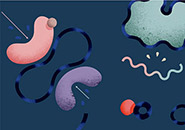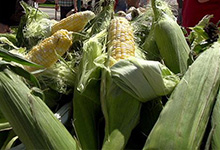When a plant suffers a microbial infection, it produces salicylic acid. But the role this hormone plays in protecting plants has been somewhat of a mystery. A team of researchers led by HHMI-GBMF investigator Xinnian Dong has proposed a model to explain how salicylic acid controls both cell death at the site of infection and cell survival and immune activation in noninfected tissue.
When exposed to infection, plant cells respond either by dying, to protect the rest of the plant, or by activating resistance measures to survive. Salicylic acid and its signal transducer, NPR1, both influence the outcome, but they do not interact directly. Dong and her research team at Duke University studied how two other proteins—NPR3 and NPR4—interact with salicylic acid and NPR1 before and after infection to modulate levels of plant defense.
Observing mutants of the model plant Arabidopsis thaliana that lacked NPR3, NPR4, or both, Dong’s team concluded that NPR3 and NPR4 both promote degradation of NPR1, whose buildup prevents cells from dying. Next, the team found that salicylic acid had opposite effects on these two protein-protein interactions. It stimulates NPR3’s degradation of NPR1—but only with high levels of salicylic acid—and prevents NPR4’s degradation of NPR1 in the presence of salicylic acid.
Dong’s group proposes that without infection, NPR1 levels are kept low by NPR4-mediated degradation. Upon infection, salicylic acid forms a concentration gradient with higher levels at the infection site and lower levels outward. A high level of salicylic acid in infected cells facilitates NPR3-based degradation of NPR1, and the infected cells die. In cells distant from the damage, the lower salicylic acid level limits the binding of salicylic acid to NPR3 and NPR4, blocking degradation of NPR1, and those distant cells survive.
The team’s findings, published June 14, 2012, in Nature, may be applied to both agriculture and medicine. “But our dynamic model has to be tested first,” Dong says. “That is not going to be easy.”








